11 Stunning Star-Shaped Flowers to Add to Your Garden
Star-shaped flowers add a touch of elegance and charm to any garden. With their unique petal arrangements and vibrant colors, these flowers create stunning focal points that attract attention and pollinators alike. Whether you’re looking to brighten up your garden beds, add texture to your borders, or create eye-catching vertical displays, these flowers are sure to enhance your outdoor space. Perfect for gardens of all sizes, their beauty and versatility make them a must-have for any plant enthusiast.
This post may contain affiliate links, which helps keep this content free. Please read our disclosure for more info.
Clematis

Clematis flowers are known for their distinct star-like appearance, with petals that radiate from the center, giving them a unique structure. They come in various colors, from deep purples to soft whites, adding beauty and versatility to any garden. Clematis thrives in both sunny and partially shaded areas, making it an ideal choice for vertical spaces such as trellises and fences.
The flowers’ intricate structure adds texture and dimension, and many varieties have a light fragrance. Clematis vines can grow rapidly and cover a large area, providing an elegant backdrop to other plants or acting as a natural privacy screen. They are also hardy and come in varieties that bloom throughout the year, offering year-round appeal.
Star Jasmine (Trachelospermum jasminoides)

Star Jasmine features fragrant, white, star-shaped flowers that bloom in late spring or early summer. This plant is a vigorous climber, often used on trellises, fences, or walls to create a stunning display of flowers. The glossy green leaves complement the bright white blooms, offering a vibrant contrast in the garden.
Star Jasmine is a favorite among gardeners for its sweet fragrance, which fills the air during its blooming season. It’s a low-maintenance plant that can thrive in full sun to partial shade. Additionally, the plant’s evergreen nature ensures year-round beauty, even when it’s not in bloom.
Morning Glory (Ipomoea purpurea)
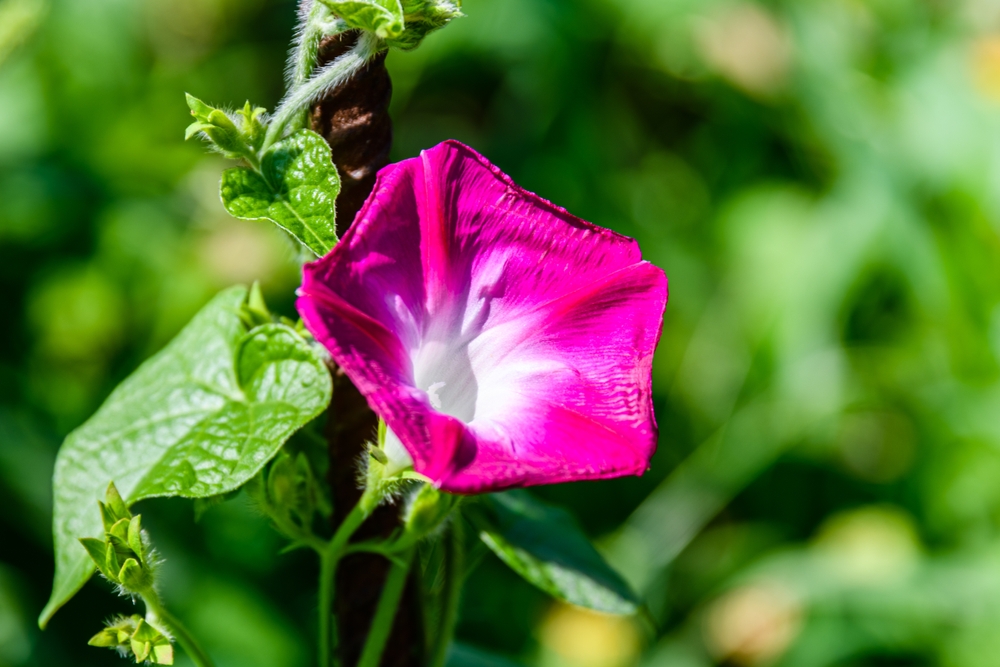
The star-shaped flowers of morning glory are well-known for their vibrant colors, ranging from deep blues to rich purples and pinks. These climbing vines produce large, funnel-shaped blooms that open in the morning and close in the afternoon, making them a delightful addition to any garden. Morning glories thrive in sunny spots, making them ideal for sunny trellises or fences.
Their rapid growth rate and ability to cover a large area quickly can provide a quick and beautiful burst of color in the garden. The flowers are also attractive to pollinators, making them a great choice for those looking to support local wildlife. Morning glories are an annual plant, which means they must be replanted each year, but their charm makes them well worth the effort.
Fringed Tulips (Tulipa spp.)
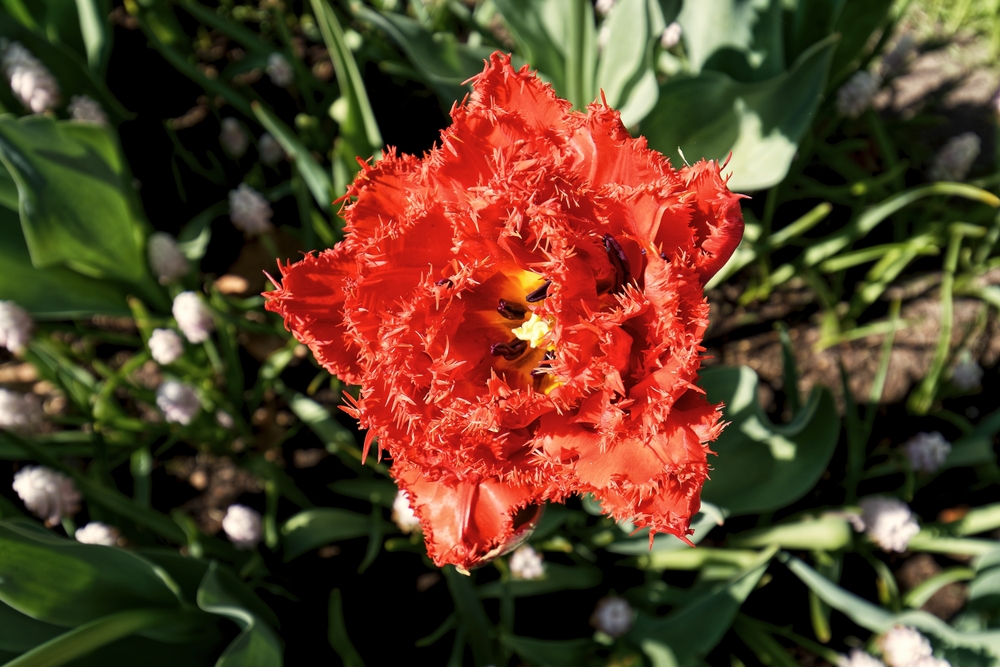
Fringed tulips are unique for their star-shaped, frilled petals, which give them an elegant and distinct look. These tulips come in a variety of colors, from bright reds to soft pastels, and their delicate fringed edges add texture and visual interest. Tulips grow best in full sun and well-drained soil, making them ideal for early spring gardens.
These flowers bloom in early spring, signaling the arrival of warmer weather. They are perfect for planting in borders, containers, or as part of a mixed flower bed. Their bold appearance and striking form make them a focal point in any garden.
Aquilegia (Columbine)

Aquilegia, or columbine, features delicate star-shaped flowers with long, pointed petals that give them an intricate, almost mystical appearance. These flowers come in a variety of colors, including purples, blues, pinks, and whites, often with contrasting centers. Aquilegia is a perennial that thrives in partial shade and is well-suited for woodland gardens or shaded corners.
Aquilegia’s unique flower structure makes it an eye-catching choice, and it is especially attractive to hummingbirds and butterflies. It prefers cool, moist environments and can self-seed, creating new plants each year. Its easy care and long-lasting blooms make it a great choice for gardeners seeking a low-maintenance, beautiful addition to their garden.
Pentas (Pentas lanceolata)
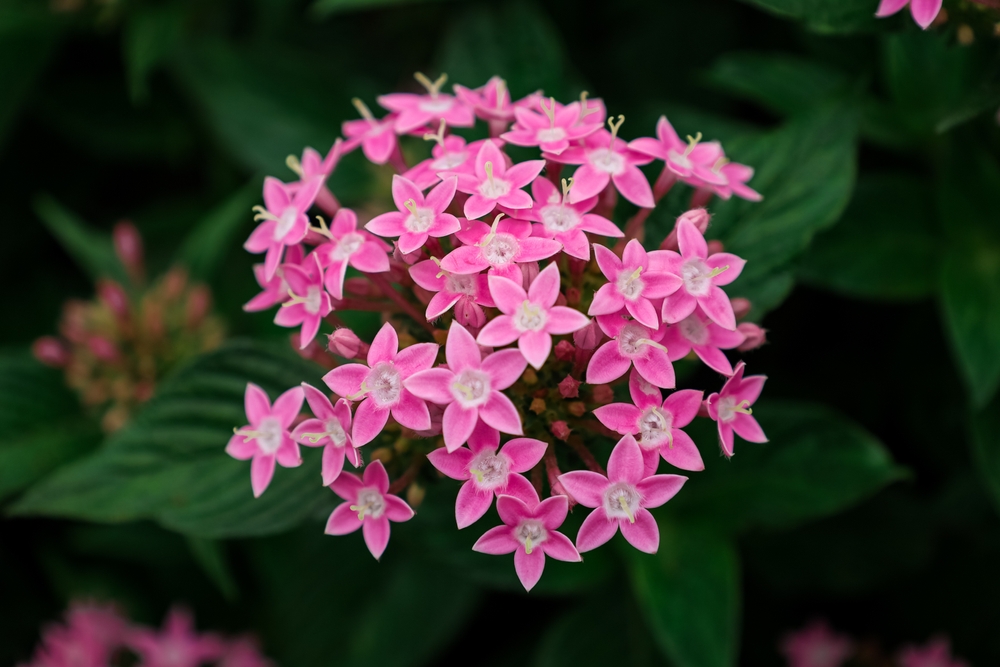
Pentas, or Egyptian star cluster, is known for its vibrant, star-shaped flowers that bloom in clusters. These flowers come in shades of red, pink, purple, and white, creating a striking display in the garden. Pentas thrive in full sun and well-drained soil, making them perfect for hot, sunny areas in the garden.
These plants are also a favorite among pollinators, particularly butterflies, making them a great choice for attracting wildlife. Pentas bloom from spring until fall, providing long-lasting color and appeal. They are also heat-tolerant and drought-resistant once established, making them a low-maintenance option for gardeners.
Star of Bethlehem (Ornithogalum umbellatum)
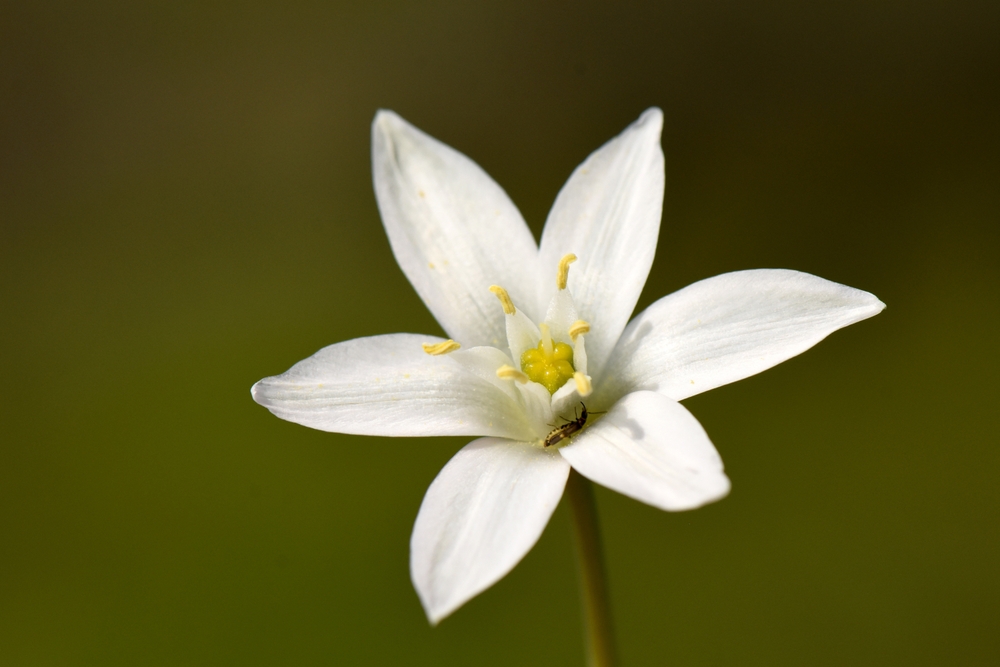
Star of Bethlehem is a perennial flower that produces small, star-shaped white flowers with greenish centers. These flowers bloom in early spring, adding a fresh, delicate touch to gardens. They are often used in naturalized areas, rock gardens, or along borders where their white blossoms can create a striking contrast with other plants.
These flowers grow best in full sun and well-drained soil, and they are relatively easy to grow. The plants are also deer-resistant, making them a good option for gardens where wildlife may be a concern. Star of Bethlehem is a resilient and charming flower that adds subtle beauty to any garden.
Jacobean Lily (Hippeastrum)

The Jacobean lily, also known as amaryllis, features large, trumpet-shaped flowers with a star-like arrangement of petals. These flowers come in a range of colors, including red, pink, white, and orange, often with striking patterns and contrasting veins. Jacobean lilies thrive in bright, indirect light and are often grown as container plants, making them perfect for patios or indoor spaces.
These flowers bloom in the winter or early spring, adding a pop of color to the otherwise dull months. Amaryllis is easy to grow, requiring only a well-drained potting mix and occasional watering. Their dramatic appearance and ability to bloom in the off-season make them a beloved choice for gardeners.
Plumeria
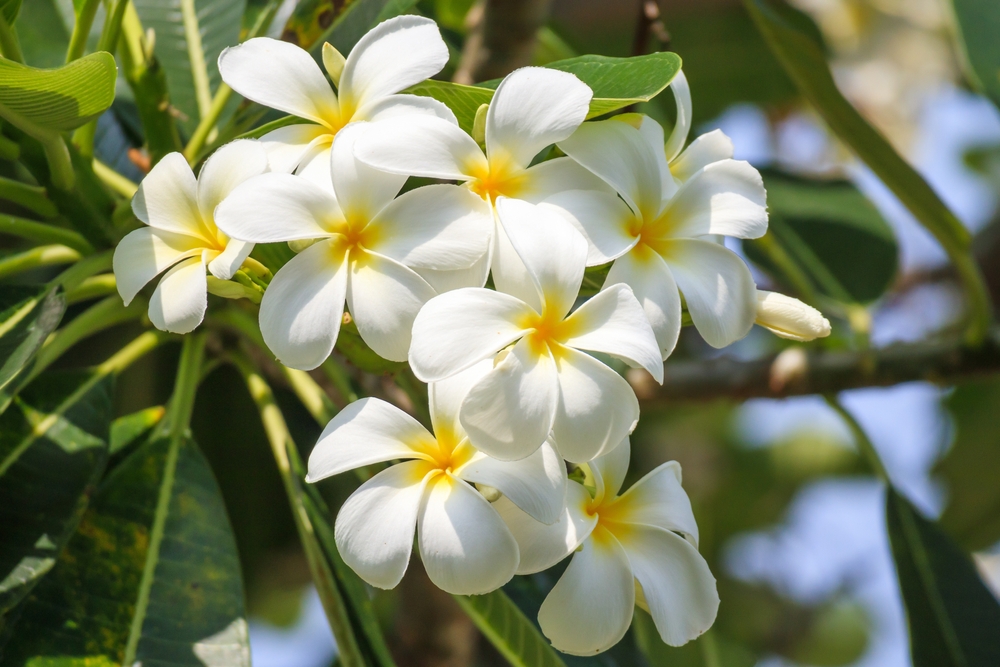
Plumeria, often known as frangipani, produces fragrant, star-shaped flowers that are typically white, pink, yellow, or red. These flowers are often associated with tropical gardens and are perfect for adding a touch of the tropics to your outdoor space. Plumeria thrives in full sun and well-drained, sandy soil, making it ideal for warmer climates.
These flowers are particularly attractive to bees and butterflies, contributing to the biodiversity of the garden. Plumeria’s fragrant blooms are often used in leis and can be enjoyed both outdoors and in vases indoors. Although they require some care to thrive, their beautiful, fragrant flowers are well worth the effort.
Chilean Jasmine (Mandevilla)

Chilean Jasmine is a climbing plant that produces large, star-shaped flowers in shades of pink, red, and white. These flowers have a delicate, silky texture and a sweet fragrance that makes them a favorite among gardeners. Chilean Jasmine thrives in full sun and is often used to cover trellises, fences, or arbors.
This plant can grow quickly and cover large areas, creating a stunning floral display in the summer. Its vibrant blooms and fragrance are ideal for adding color and a touch of the tropics to any garden. Mandevilla is a popular choice for those looking to attract pollinators while enjoying a beautiful floral display.
Dahlia
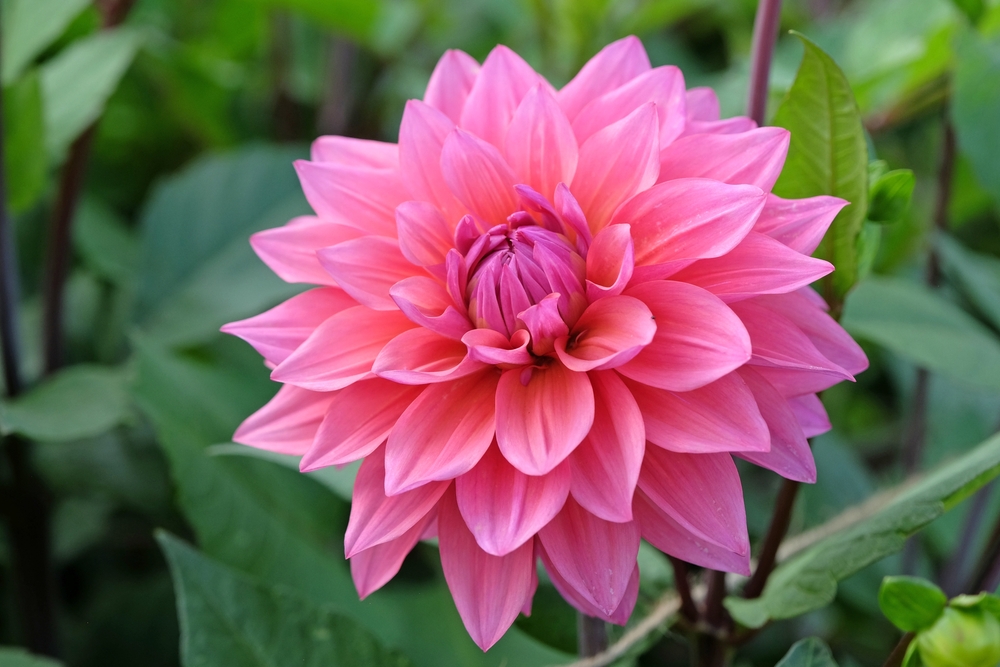
Dahlias offer star-shaped flowers in a wide variety of colors and sizes, from bright oranges and reds to soft pinks and purples. These flowers stand out with their geometric petal arrangement, which resembles a starburst. Dahlias thrive in full sun and can make excellent border plants or centerpieces in flower beds.
Their long blooming period from mid-summer to fall means that they provide beauty for much of the year. Dahlias are also easy to grow and care for, requiring only well-drained soil and regular watering. The wide range of varieties allows gardeners to choose a style that fits their garden design perfectly.
This article originally appeared on Avocadu.
